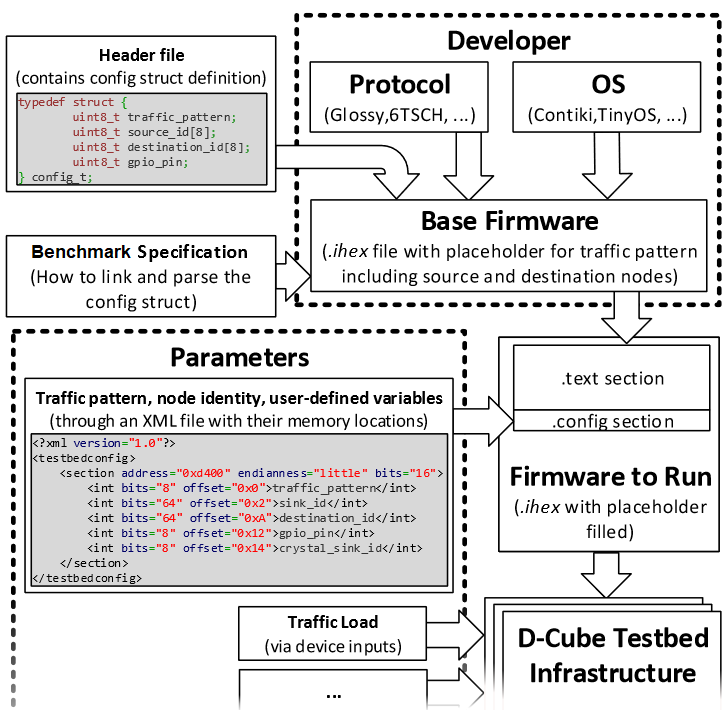Special Features
EEPROM mailbox.
D-Cube signals
Messages to be sent over the network are available
in an EEPROM connected via I2C bus
• CAT24M01 EEPROM (located at address 0x50 on the bus),
datasheet: https://www.onsemi.com/pub/Collateral/CAT24M01-D.PDF
• The I2C bus is shared between the testbed’s observer module
(Raspberry Pi 3) and the target node (TelosB replica)
• A pre-defined GPIO pin is used to signal that data is available
For more information, please refer to the logistics information page.
Reproducible Wi-Fi interference generation.
D-Cube embeds JamLab-NG, an open-source framework allowing the generation of controllable Wi-Fi interference using the off-the-shelf devices such as the Raspberry Pi 3. JamLab-NG enables the fine-grained control of individual link-layer frames, avoiding the uncontrollable delays introduced by the network stack, operating system, and clear channel assessment procedure. JamLab-NG also allows generating repeatable Wi-Fi interference patterns by controlling radio settings such as the transmission speed and the packet length, which would otherwise be automatically adapted by the radio firmware at runtime. Each observer node in D-Cube can act as an interfering device using JamLab-NG in parallel to its measurement tasks. The JamLab-NG code is based on NexMon and is openly available to the community. An article describing JamLab-NG in detail is available as PDF here.

